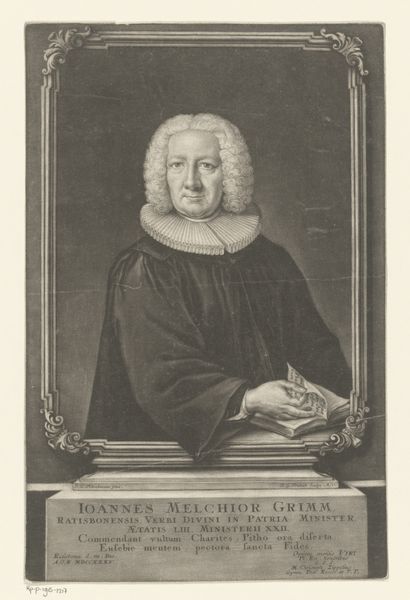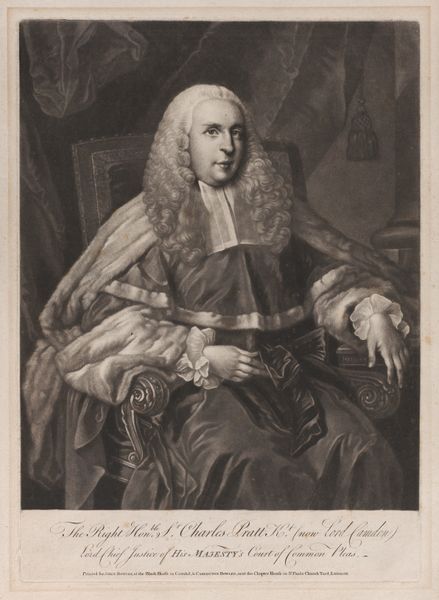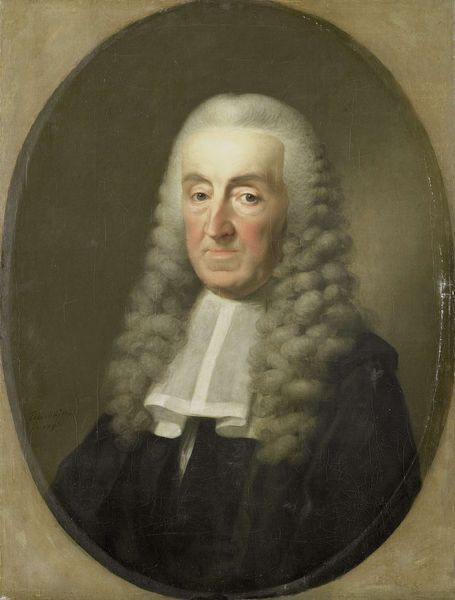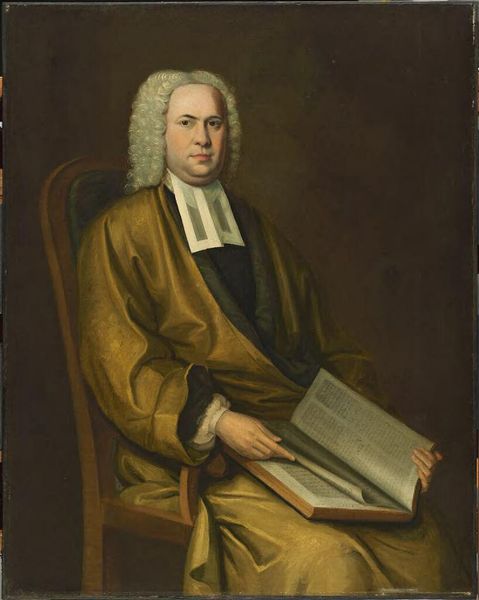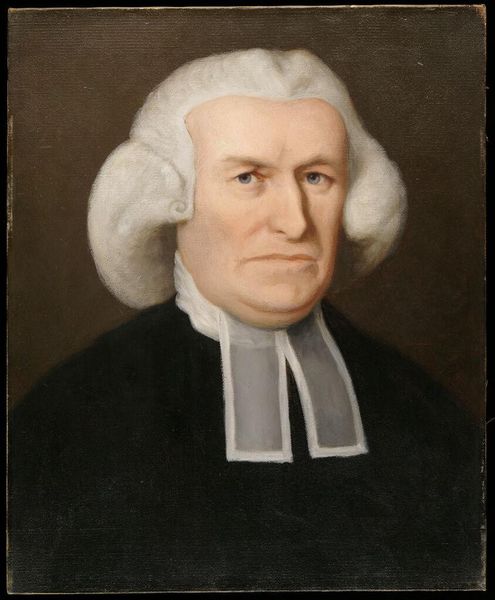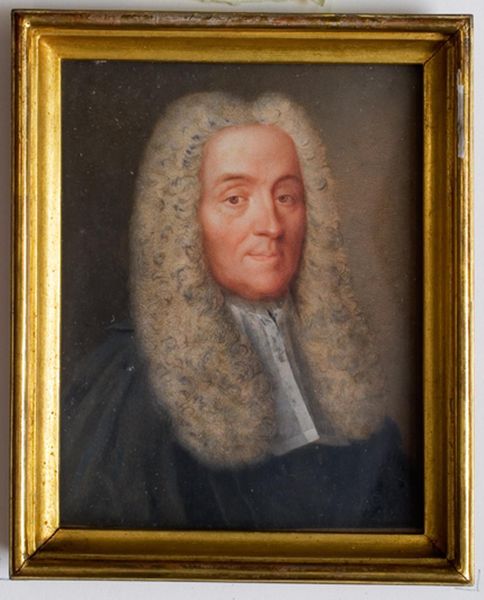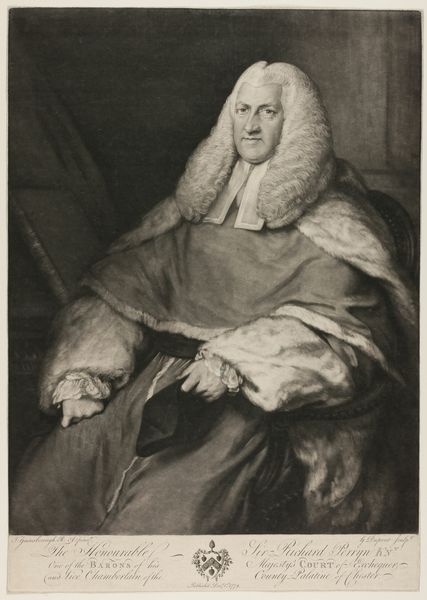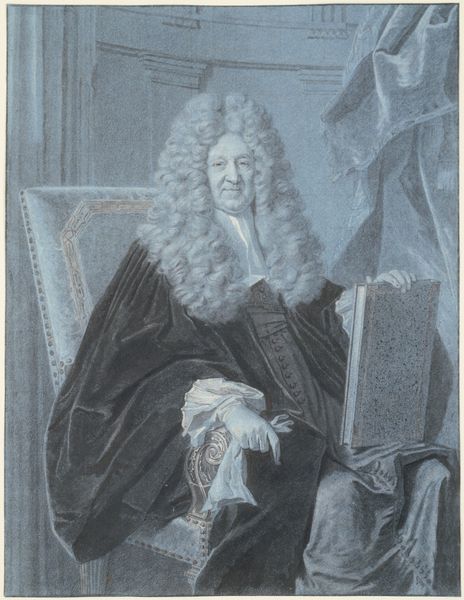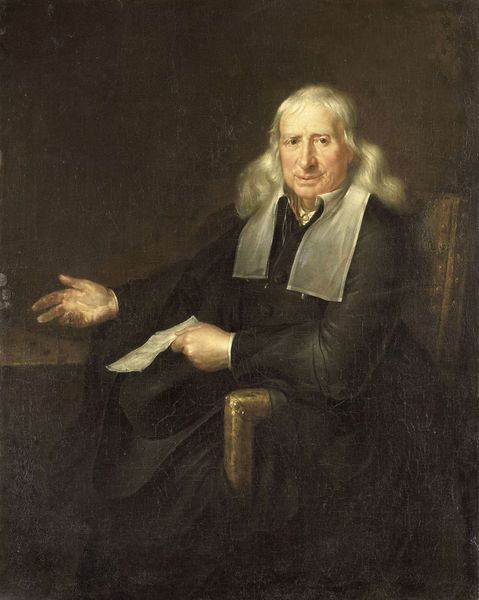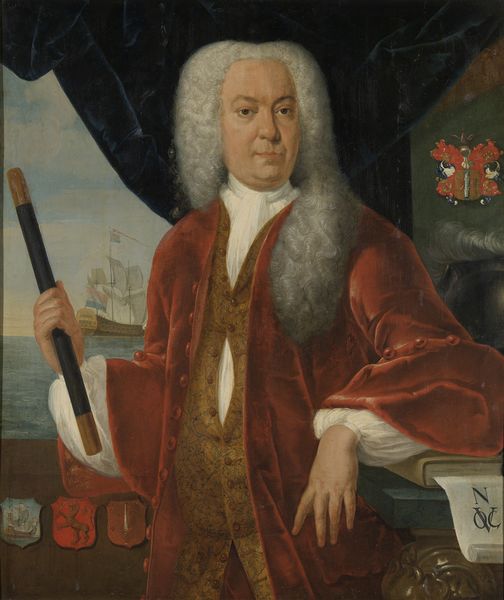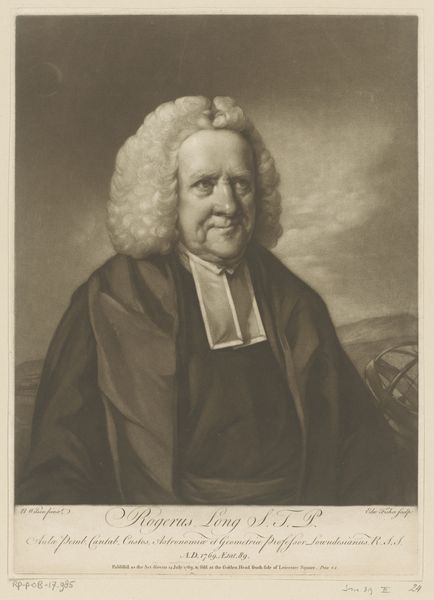
painting, oil-paint
#
portrait
#
baroque
#
painting
#
oil-paint
#
history-painting
Dimensions: 104.6 x 78.3 cm
Copyright: Public Domain
Curator: Here we have an interesting example of Baroque portraiture, thought to date from between 1700 and 1710. It’s entitled "Portrait of Johann Hieronymus von Holzhausen," and the artist, as yet, remains unknown. Editor: My first thought is one of imposing authority, really underscored by the wig, which practically screams social power, doesn’t it? It’s hard to see past that overwhelming symbol. Curator: Absolutely. The portrait sits squarely within a tradition of depicting civic leaders of the time. Holzhausen held several key positions in Frankfurt's municipal government, and the trappings of wealth and power in the piece were vital statements of authority. The column suggests nobility or strength and his controlled expression conveys gravitas, something we often observe in portraits of this era. Editor: His right hand, the one extending toward us, is fascinating. It’s as if he’s offering, or perhaps even demanding, something from the viewer. The gloves, just on one hand, hint at status, and almost give him an artificial distance from those viewing the piece. Are we worthy of him? It's an engagement steeped in inequality. Curator: Very astute. That open gesture was common. Wealthy patrons commissioned artists for visual narratives: how they wished to be seen, rather than, perhaps, their true personalities. It solidified their legacy, didn't it? Think about how the portrait became a tool for maintaining social hierarchies and confirming a worldview. Editor: That’s precisely it. The image is so performative. And in examining a piece like this, we must acknowledge not only Holzhausen’s perspective but also ours, across centuries of shifting values. Who had access to being portrayed, and why? The power dynamic continues even now. Curator: A vital consideration. Baroque art provides a mirror for how those in power cement their status but it should also serve as a touchstone for understanding its repercussions even today. Editor: Agreed. Let’s hope a closer study may one day unveil the artist of the artwork, and further inform its historic social value.
Comments
No comments
Be the first to comment and join the conversation on the ultimate creative platform.


